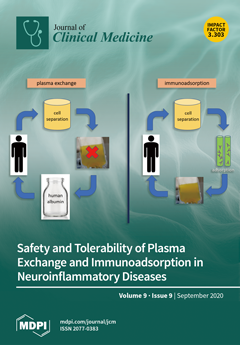Background: Coronary artery perforation (CAP) is a rare but potentially life-threatening complication of percutaneous coronary interventions (PCIs) due to the risk of cardiac tamponade. Strikingly, in contrast to numerous analyses of CAP predictors, only few studies were focused on the predictors of tamponade after PCI, once iatrogenic CAP has occurred. Our aim was to search for clinical and periprocedural characteristics, including the coronary artery involved, associated with the development of acute cardiac tamponade among patients experiencing CAP.
Methods: From the medical records of nine centers of invasive cardiology in southern Poland, we retrospectively selected 81 patients (80% with acute myocardial infarction) who had iatrogenic CAP with a visible extravasation jet during angiography (corresponding to type III CAP by the Ellis classification, CAP
III) over a 15-year period (2005–2019). Clinical, angiographic and periprocedural characteristics were compared between the patients who developed acute cardiac tamponade requiring urgent pericardiocentesis in the cathlab (n = 21) and those with CAP
III and without tamponade (n = 60).
Results: CAP
III were situated in the left anterior descending artery (LAD) or its diagonal branches (51%, n = 41), right coronary artery (RCA) (24%, n = 19), left circumflex coronary artery (LCx) (16%, n = 13), its obtuse marginal branches (7%, n = 6) and left main coronary artery (2%, n = 2). Acute cardiac tamponade occurred in 24% (10 of 41), 21% (4 of 19) and 37% (7 of 19) patients who experienced CAP
III in the territory of LAD, RCA and LCx, respectively. There were no significant differences in the need for urgent pericardiocentesis (37%) in patients with CAP
III in LCx territory (i.e., the LCx or its obtuse marginal branches) compared to CAP
III in the remaining coronary arteries (23%) (
p = 0.24). However, when CAP
III in the LCx were separated from CAP
III in obtuse marginal branches, urgent pericardiocentesis was more frequently performed in patients with CAP
III in the LCx (54%, 7 of 13) compared to subjects with CAP
III in an artery other than the LCx (21%, 14 of 68) (
p = 0.03). The direction of this tendency remained consistent regardless of CAP management: prolonged balloon inflation only (n = 26, 67% vs. 13%,
p = 0.08) or balloon inflation with subsequent stent implantation (n = 55, 50% vs. 24%,
p = 0.13). Besides LCx involvement, no significant differences in other characteristics were observed between patients according to the need of urgent pericardiocentesis.
Conclusions: CAP
III in the LCx appears to lead to a higher risk of acute cardiac tamponade compared to perforations involving other coronary arteries. This association may possibly be linked to distinct features of LCx anatomy and/or well-recognized delays in diagnosis and management of LCx-related acute coronary syndromes.
Full article






